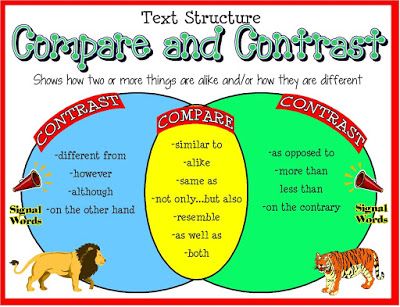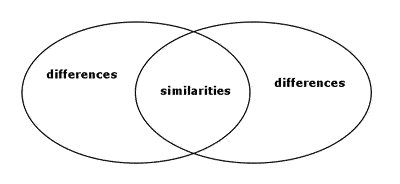US History - Comparative Analysis

Comparative Analysis

One way of analyzing is by using Comparative Analysis or simply put Compare and Contrast. Comparing is done by finding the Similarities and Differences between two (2) or more historical events/ideas/people/developments. Contrasting is only finding the Differences.
| Compare | Contrast |
|---|---|
| Look for clue words how two things are alike such as; | Look for clue words how two things are such as; |
| all, both, like, as, similarly, likewise | unlike, by contrast, however, except, different, on the other hand |

You can analyze a specific topic by highlighting the similarities and differences. How they are similar and how they are different. A Venn Diagram is usually used as a graphic organizer for this purpose. You may use this Venn Diagram Worksheet for Similarities and Differences or a T-Chart to list differences.
When writing, most of the time when you change your topic, you should start a new paragraph. For a Comparative Analysis essay, one paragraph would explain in detail the first topic, as well as the other topic. You achieve the comparative analysis by comparing categories that are the same, or in other words "like" or "unlike" things. For example, if you are comparing the economic philosophies of Adam Smith and Karl Marx, you would write "Adam Smith was the father of capitalism while Karl Marx was the father of communism." Then you would explain further by writing; "Capitalism is the belief in private property whereas communism is the belief that there is no private property". And then explain; "In Smith's economic system of capitalism the government's hands are off the economy which is called laissez-faire or free market capitalism. This is in opposition to Marx's economic system of communism in which the economy is controlled by the state. This is called a command economy."
The back and forth characteristics of comparative analysis is necessary for it to be considered analysis. You are consistently comparing one aspect of your discussion with another aspect of your discussion or fact verses fact.